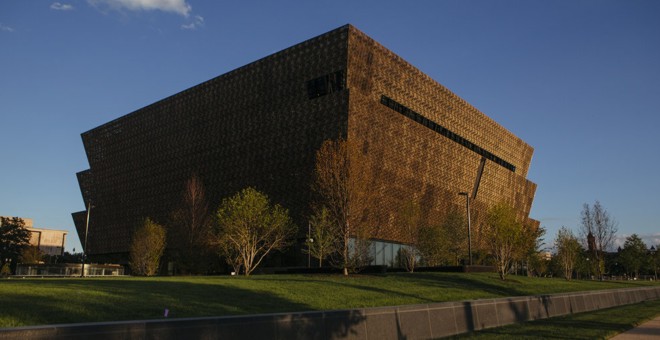As we rapidly approach the end of the year, it’s time to release ConstructConnect’s list of the “Top 5 Coolest Buildings of 2016.” In order to be eligible, the building has to have been completed, topped out or opened within the calendar year and has some aspect that makes the building cool. The competition was stiff with lots of great projects to choose from, so narrowing it down to just five wasn’t easy. So without further ado, and in no particular order, here are our “Top 5.”
1. 461 Dean – Brooklyn, New York
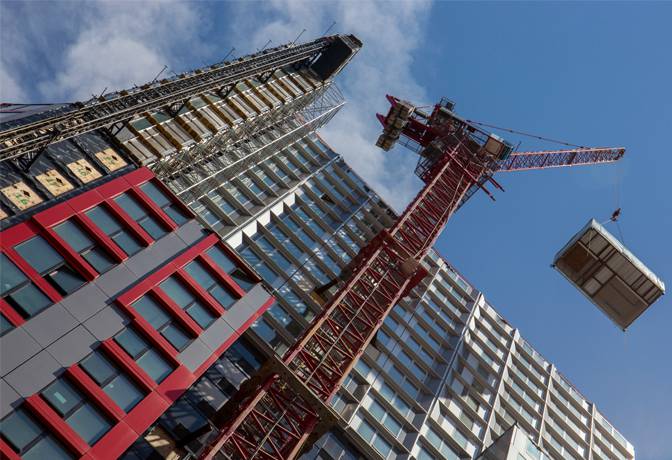
This fall saw the completion of 461 Dean, a 32-story residential tower being touted as the world’s tallest modular construction. The final modular unit was hoisted into place back in May and the building opened just last month.
Designing apartments of different sizes and accommodating the triangular plot of land the building would sit on was an architectural puzzle. SHoP Architects had to design 32 unique base modules that would be constructed in an offsite factory, shipped to the site and then hoisted and connected into place like Lego bricks.
As a proof of concept that modular construction can be used to build tall buildings faster and cheaper than convention methods, it was a bit of a failure. Construction began in 2012 and was expected to be completed in 18 months. With delays and setbacks, it didn’t deliver on either of those promises, it took two years longer to complete and reportedly ran millions of dollars over budget.
About a year after the project began work was stopped near the end of August 2014, stalling the project out at 10 stories. The developer Forest City Ratner and the contractor, Skanska USA filed dueling lawsuits, each blaming the other for cost overruns and delays in construction.
Skanska claims the plans for the project were flawed leading to misalignment of the modular components. Forest City blamed Skanksa for poor execution and accused them of closing the factory where the modular units were being built to bilk more money out of the project.
The company building the modular units was a joint venture between Forest City and Skanska and it was their first foray into this type of construction. Forest City bought Skanksa out of their share of the modular factory business to complete the project which they have now sold to the former Forest City executive who oversaw construction, Roger Krulak, and his new company, Full Stack Modular.
2. National Museum of African American History and Culture – Washington, D.C.
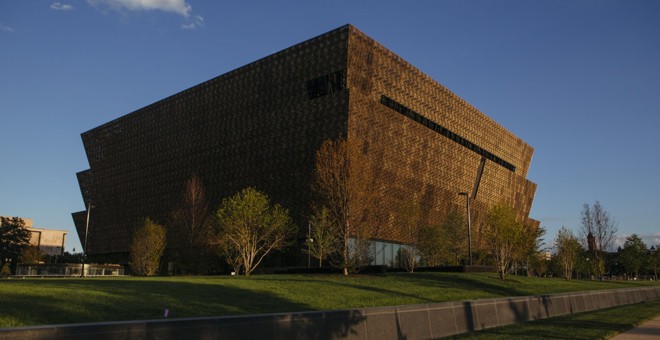
In 1915, the idea for a memorial dedicated to the civic contributions of African Americans was conceived by a group of black veterans of the Union Army gathered in Washington to celebrate the 50th anniversary of the end of the Civil War. Nearly 100 years later, in September 2016, the opening of the National Museum of African American History and Culture located on the National Mall became a reality. The new museum sits on the last undeveloped site on the National Mall.
The cultural and historic significance of the museum was enough for it to make this year’s list. On top of that, it boasts a stunning design inside and out. The inverted ziggurat design of the corona was inspired by the three-tiered crowns used in Yoruban art from West Africa. The pattern in the façade was inspired by ironwork crafted by slaves in areas like Charleston, SC. The bronze-colored aluminum façade is in stark contrast to the rest of the buildings on the Mall.
The museum was designed by architectural team Freelon Adjaye Bond/SmithGroup with David Adjaye serving as lead designer and Philip Freelon as lead architect. General contractors for the project were Clark Construction Group, Smoot Construction, and H.J. Russell & Company. McKissack & McKissack, an outgrowth of the first African American-owned architectural firm in the U.S., served as project manager for the 19th division of the Smithsonian Institution. The museum is expected to be the Smithsonian’s first LEED Gold certified building.
3. VIA 57 West – New York, New York
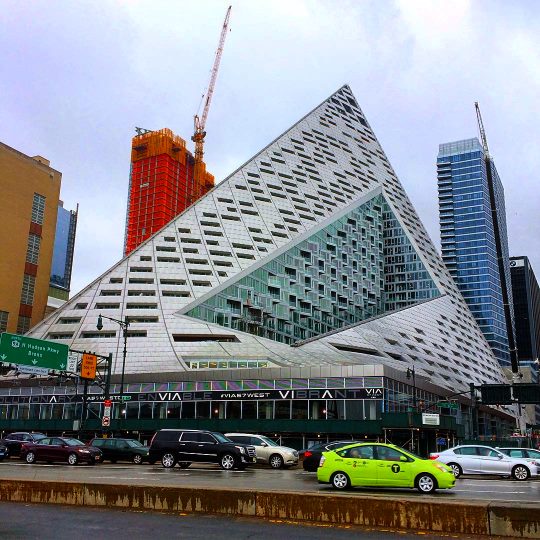
Bjarke Ingels’ “courtscraper,” an amalgamation of a European courtyard block and an American skyscraper, is a cool addition to the NYC skyline. The shape of the building, according to Ingels, is neither a pyramid nor a tetrahedron, but rather a hyperbolic paraboloid. Fun Fact: The shape of Pringles are hyperbolic paraboloids.
One corner of the building rises 450 feet giving it the feel of a skyscraper with the opposing corner sloping to the ground. The central courtyard features the exact proportions of Central Park at 1/13,000 the size. In addition to the courtyard providing green space, the building will also have a number of sustainable features.
A filtering system will recycle approximately 60,000 gallons of water each day and rainwater will be collected for reuse. Energy efficient appliances and water efficient plumbing fixtures were used throughout the building. The building uses LED lighting and occupancy sensors will be used to reduce energy use in common areas.
Building materials with low levels of volatile organic compounds were chosen to improve air quality. Construction used responsibly forested wood and cradle-to-cradle certified building materials. The 709 apartments in the 940,000-sqft building will be ventilated with fresh air to improve air quality.
4. Guangzhou CTF Finance Centre – Guangzhou, China
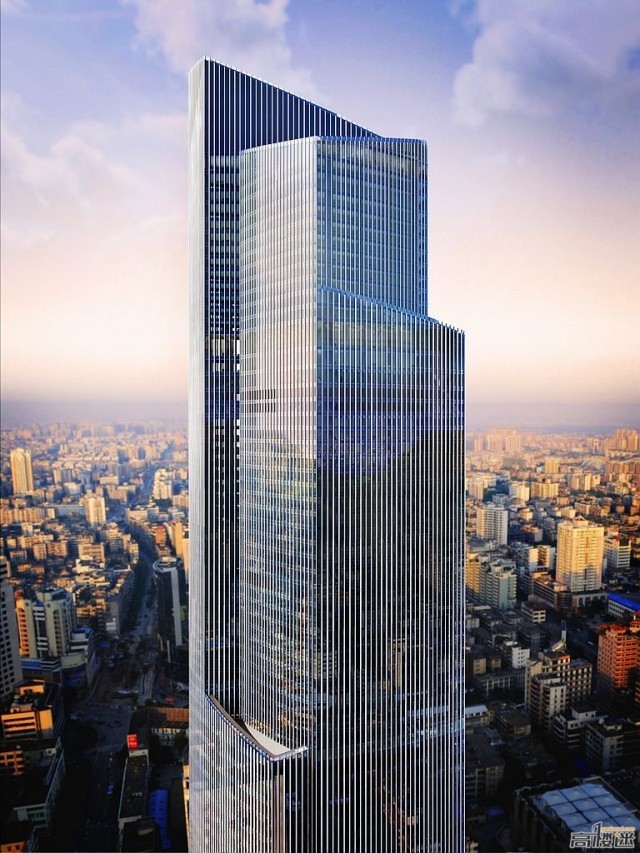
So what initially brought the CTF Finance Centre to our attention to include in our list? Three words: World’s. Fastest. Elevator. This supertall structure features two elevators designed by Hitachi capable of reaching speeds of 1,200 m/min which is approximately 45 mph.
This easily beat out the previous world record holder, Taipei 101, which had elevators capable of traveling 1,101 m/min which is about 38 mph. It doesn’t appear that Hitachi got their record verified with the folks at Guinness World Records. It wouldn’t have lasted long if they had since the Guinness World Records has a new record holder for world’s fasted elevator. Mitsubishi Electric Corporation installed their NexWay elevator in Shanghai Tower that tops out at 1,230 m/min which is nearly 46 mph.
Still, having an elevator that can travel faster than a greyhound (the dog, not the bus) is still pretty cool. Also, when the building topped out back on July 10, 2014, it was reportedly the fastest assembled supertall skyscraper at the time.
The 1,739-foot tall supertall, designed by Kohn Pedersen Fox Associates, has four angled setbacks at transition points between uses like office to residential and residential to hotel. To honor the past, terracotta mullions were installed to project out to provide shade to the glass façade.
5. T3 – Minneapolis, Minnesota
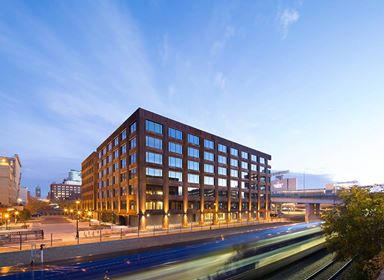
T3, which stands for timber, technology and transportation, is the largest mass timber building in the U.S. It is also the first large-scale, multi-story office building to be built in the U.S. in 100 years. Mass timber has been touted as a sustainable and safe alternative to concrete and steel for the past few years. A number of mass timber buildings have been constructed in other countries. It’s nice to see a mass timber building finally get done in the States.
Michael Green Architecture, a huge supporter or mass timber construction, along with DLR Group designed the seven-story, 220,000-sqft office building. The building used nail-laminated timber (NLT) panels along with a glulam post and beam frame. Exposed mass timber columns and floors run throughout the building.
A majority of the NLT panels were made from trees killed by the mountain pine beetle. The NLT panels were prefabricated which allowed for 180,000 sqft of timber framing to be completed in under 10 weeks.
Thanks to the U.S. Tall Wood Building Prize Competition sponsored by the U.S. Department of Agriculture, the T3 won’t be the sole mass timber building for long. Two projects won the competition and will split the $3 million grant. The Lever Architecture-designed Framework will be a 12-story, 130-foot mixed-use building in Portland, OR is expected to break ground next February. SHoP Architects is designing a 10-story, 120-foot residential tower in Manhattan.
About Kendall Jones
Kendall Jones is the Editor in Chief at ConstructConnect. He has been writing about the construction industry for years, covering a wide range of topics from safety and technology to industry news and operating insights.


 Sign In
Sign In